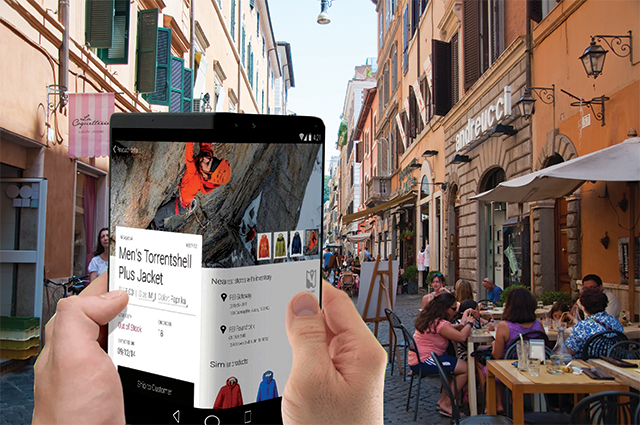折叠屏会成为引领未来的新技术吗?
Many have longed for lightweight, durable, and flexible touch screen devices, thanks to science fiction. While some seem impossible to make, the tri-folding tablets in the US sci-fi TV series Westworld look like something we could go buy sooner or later. The 2012 film Looper likewise shows cellphones that could be folded up into half their size.
科幻作品让很多人都渴望拥有轻便、耐用且灵活的触屏设备。虽然有些设想看起来不可能实现,但看来我们迟早能买到像科幻美剧《西部世界》里的三折叠屏平板了。而在2012年电影《环形使者》中也同样出现了能折叠到一半大小的手机。
Now, after 11 years of promising this foldable future, South Korean electronics company Samsung has finally delivered. With other companies rushing to roll out their own flexible phones, it seems that they've kicked off a new arms race in the smartphone industry.
如今,韩国电子公司三星终于让11年前承诺过的折叠屏未来得以实现。随着其他公司也相继火速推出各自的折叠屏手机,智能手机行业的新竞赛已经打响。

Back in November, Samsung announced its newest model, the Galaxy Fold. Since then, Xiaomi, Huawei and other Chinese companies have announced similar plans for foldable phones. It looks like Samsung won't take the lead all by itself, however. The same month, Royole, a lesser-known electronics brand from China, announced that it had a model – the Flexpai – ready to release. And at the 2019 Mobile World Congress, which concluded on Feb 28 in Spain, Huawei took the covers off its foldable Huawei Mate X for 2019.
去年11月,三星发布了最新型号智能手机三星Galaxy Fold。随后,小米、华为和其他中国公司宣布了相似的折叠屏手机研发计划,因此看来三星并不会独领市场。同月,中国一家小众电子品牌柔宇(Royole)也宣布新款折叠屏手机Flexpai即将面市。2月28日,于西班牙举办的2019年世界移动通信大会上,华为揭晓了今年即将面市的华为Mate X。
But why has it taken so many years to turn the idea into reality? According to tech news website Android Authority, the necessary displays were difficult and expensive to produce. They wrote that, in 2012, nine out of every 10 OLED screens produced were defective (有缺陷的). Today, that 10 percent rate has been improved to between 50 and 90 percent.
不过,为何经过这么多年才将折叠屏理念付诸现实?据科技资讯网站Android Authority报道,这是因为折叠屏手机所必需的显示屏制作难度高且费用昂贵。文章中写道,在2012年,每生产的十个OLED屏幕中就有九个是次品。如今,产品合格率已经由10%提高至了50%到90%之间。
It's fun to think about how we could use this technology. We could make TVs that stick to walls like posters, or fold up easily to hide away in drawers. Instead of carrying heavy backpacks, all of our textbooks – and the whole library – could fit into our pockets. It's also nice to think that we might not have to worry about dropping our devices.
畅想下我们能怎样使用这一折叠屏技术很是有趣。我们可以生产像海报一样贴在墙上的电视,或能够轻松地把它折叠起来藏到柜子里。我们不用再背沉重的背包,因为全部的书本——甚至整个图书馆——都能放到我们的口袋里。或许我们也不用再担心会摔坏设备了,这一点想想也很棒。
The Galaxy Flex, Flexpai phones and Huawei Mate X are just the first step to that foldable future. In a keynote address, Samsung's senior vice president of mobile product marketing, Justin Denison, called the foldable screen "the foundation for the smartphone of tomorrow". "It's a blank canvas for us to do something beautiful together," he said.
三星Galaxy Flex、柔宇Flexpai和华为Mate X仅仅是我们走向折叠屏未来的第一步。三星移动产品营销高级副总裁贾斯汀·丹尼森在一次主旨发言中表示,折叠屏幕是“未来智能手机的基础”。“这是一块空白的画布,等待我们一同去创造美好。“他说。
However, if you recall the 2002 movie Minority Report, this foldable future might not be so bright. Seventeen years ago, it introduced many people to the concept of flexible screens. What was their biggest use? Inescapable advertisements on every surface that followed the characters wherever they went.
然而,如果你回想下2002年的电影《少数派报告》,恐怕会想到这种折叠屏未来或许并非那么乐观。17年前,这部影片让很多人接触到折叠屏的概念。它们最大的用处是什么?那就是铺天盖地的广告。无论片中角色走到哪儿都如影随形,摆脱不掉。













